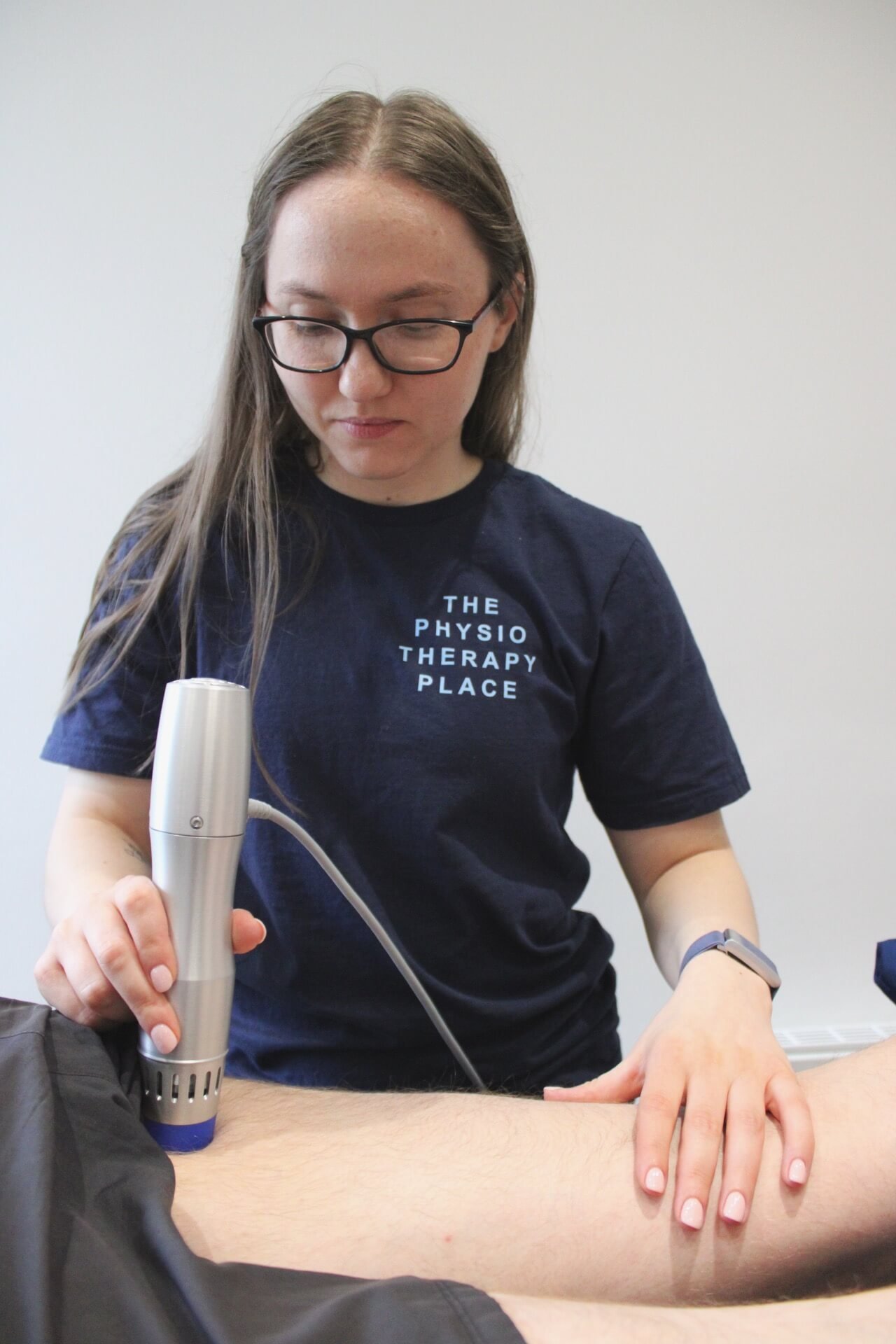What Is Hamstring Tendinitis?
Hamstring tendinitis is a common yet frustrating condition that can affect people of all ages — from runners and athletes to desk-based workers. It often starts as a dull ache in the buttock or the back of the thigh and can gradually interfere with your ability to sit, walk, or exercise comfortably.
Hamstring tendinitis refers to irritation or inflammation of the tendons that connect your hamstring muscles to the bones, most commonly at the sitting bone (ischial tuberosity). It typically develops due to overuse, poor biomechanics, or a sudden increase in activity.
The good news? With the right approach, including physiotherapy and innovative treatments like shockwave therapy, hamstring tendinitis can be effectively managed and resolved.
Common symptoms include:
Deep ache or sharp pain high in the back of the thigh or buttock
Pain when sitting for long periods
Discomfort during or after running, especially uphill or sprinting
Pain when bending forward or straightening the leg
This condition is sometimes also called proximal hamstring tendinopathy and often becomes chronic if not addressed early.
What Causes Hamstring Tendinitis?
Several factors can contribute to the development of hamstring tendinitis:
Overtraining or sudden increases in running or gym activity
Poor flexibility or muscle imbalances
Weak glutes or core muscles leading to strain on the hamstring
Poor running technique or prolonged sitting
It’s common in runners, athletes, and people returning to exercise after a break.
How Physiotherapy Can Help
Physiotherapy is the cornerstone of effective treatment for hamstring tendinitis. A tailored rehabilitation plan can help reduce pain, improve function, and prevent recurrence.
Physiotherapy typically includes:
Assessment and diagnosis: Identifying the root cause of your pain and contributing biomechanical factors.
Hands-on treatment: Soft tissue release, joint mobilisations, and dry needling to reduce muscle tension.
Exercise therapy: A structured loading program to strengthen the hamstring and surrounding muscles without aggravating symptoms.
Biomechanical correction: Addressing gait, running form, or posture to prevent re-injury.
Education: Advice on activity modification, sitting positions, and gradual return to sport.
The key to successful rehab is progressive loading — strengthening the tendon through the right type and amount of exercise over time.
The Role of Shockwave Therapy
For stubborn or chronic cases, Shockwave Therapy (Radial Shockwave Therapy or Extracorporeal Shockwave Therapy) can be a powerful addition to your treatment plan.
What is Shockwave Therapy?
Shockwave therapy uses high-energy sound waves delivered directly to the affected tendon. These waves stimulate healing by:
Increasing blood flow to the area
Breaking down scar tissue
Stimulating cell regeneration
Reducing pain by desensitising nerve endings
What does it feel like?
Most patients describe it as a tapping or pulsing sensation over the tender area. The treatment is non-invasive, typically lasts 5–10 minutes, and can be combined with exercise-based rehab.
How many sessions are needed?
While every case is different, most patients benefit from 3 to 8 sessions of shockwave therapy, spaced about one week apart, alongside ongoing physiotherapy exercises.
Why Combine Physiotherapy and Shockwave?
Combining hands-on physiotherapy, targeted rehab exercises, and shockwave therapy often leads to faster and more lasting recovery. While physiotherapy addresses the root causes and movement issues, shockwave therapy speeds up the healing process in the tendon itself.
Together, they can:
Reduce pain and inflammation
Improve tendon strength and flexibility
Get you back to running, sport, or your daily routine more confidently
Don’t Ignore Hamstring Tendon Pain
Hamstring tendinitis can linger for months without proper treatment. If you’re feeling pain near your sitting bone, or struggling with running, stretching, or prolonged sitting, don’t wait.
At The Physiotherapy Place, we offer expert assessment, personalised rehab plans, and shockwave therapy to help you recover safely and effectively.
Ready to get to the root of your pain?
Book a physiotherapy assessment today and take the first step toward lasting relief.

